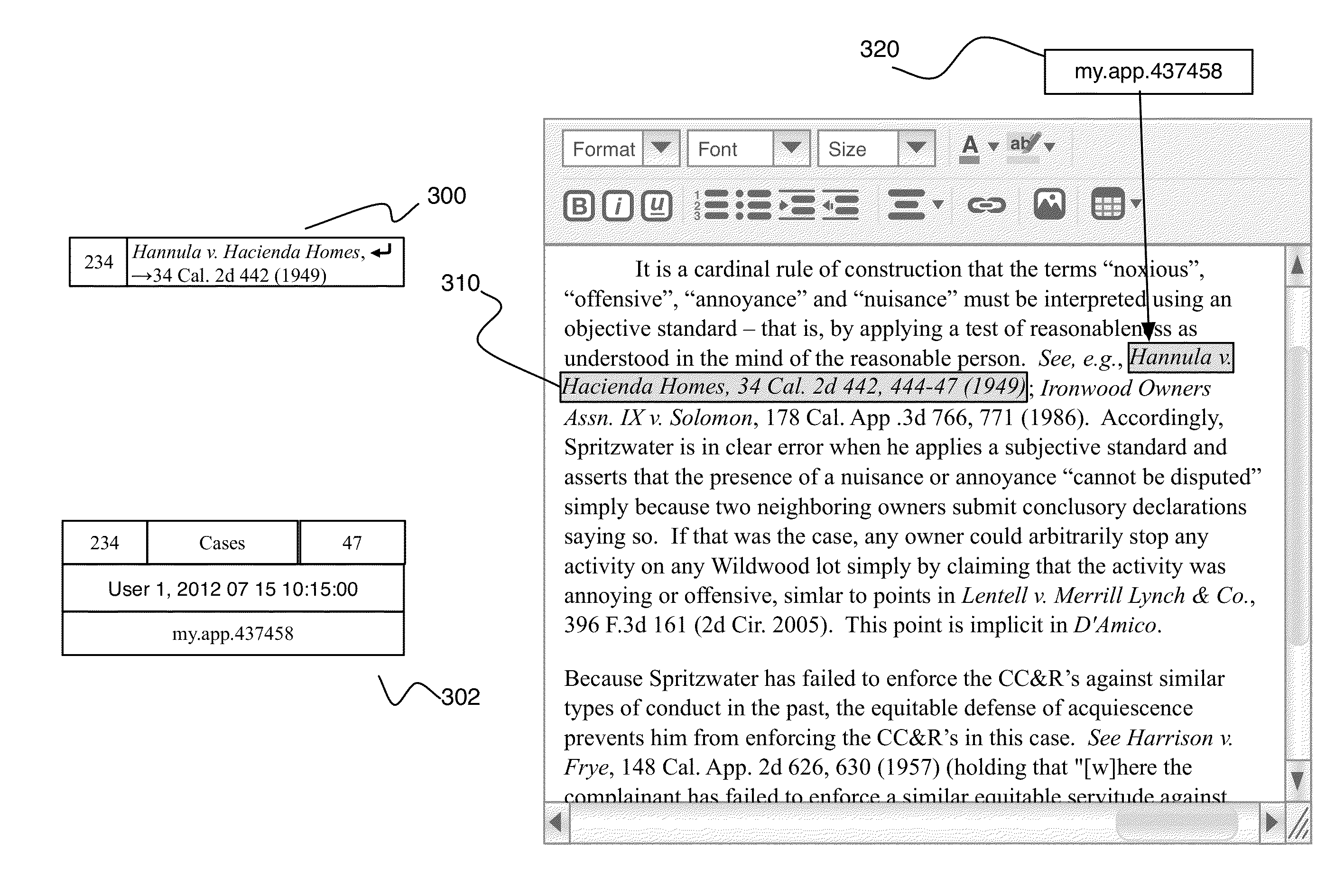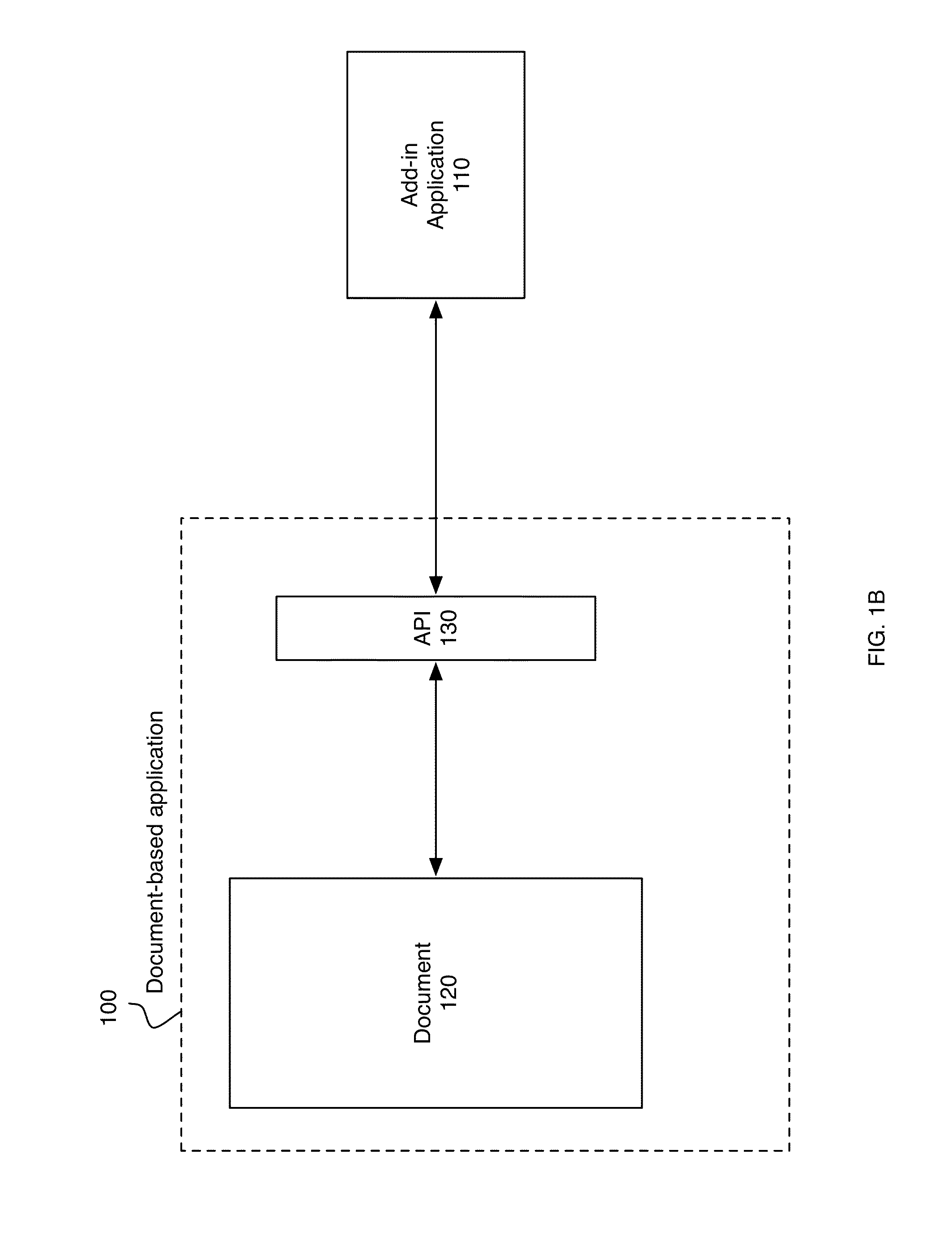Method and System for Persisting Add-in Data in Documents
a document and add-in data technology, applied in the field of software data management and storage, can solve the problems of affecting the speed of inserting fields, the difficulty of storing add-in fields, and the serious drawbacks of the application's method of storing add-in data in documents,
- Summary
- Abstract
- Description
- Claims
- Application Information
AI Technical Summary
Benefits of technology
Problems solved by technology
Method used
Image
Examples
Embodiment Construction
[0032]FIGS. 1A-1D show four different possible configurations of the present invention, although other configurations may be possible as well. As shown in FIG. 1A, add-in 110 runs as a child process or subroutine to document-based application 100. For example, add-in 110 may be launched from a toolbar within document-based application 100. Add-in process 110 accesses the contents of document 120 through calls to API 130. The add-in process 110 may use API 130 to access or control aspects of the user interface of document-based application 100, as well.
[0033]FIG. 1B shows a second possible configuration of the present invention. A document 120 is being edited within a document-based application 100. Add-in 110 runs as a standalone application in the operating system. It sends and receives messages to / from document-based application 100 through standard inter-process communications techniques. Document-based application 100 exposes an API 130 to allow for reading and modification of d...
PUM
 Login to View More
Login to View More Abstract
Description
Claims
Application Information
 Login to View More
Login to View More - R&D
- Intellectual Property
- Life Sciences
- Materials
- Tech Scout
- Unparalleled Data Quality
- Higher Quality Content
- 60% Fewer Hallucinations
Browse by: Latest US Patents, China's latest patents, Technical Efficacy Thesaurus, Application Domain, Technology Topic, Popular Technical Reports.
© 2025 PatSnap. All rights reserved.Legal|Privacy policy|Modern Slavery Act Transparency Statement|Sitemap|About US| Contact US: help@patsnap.com



